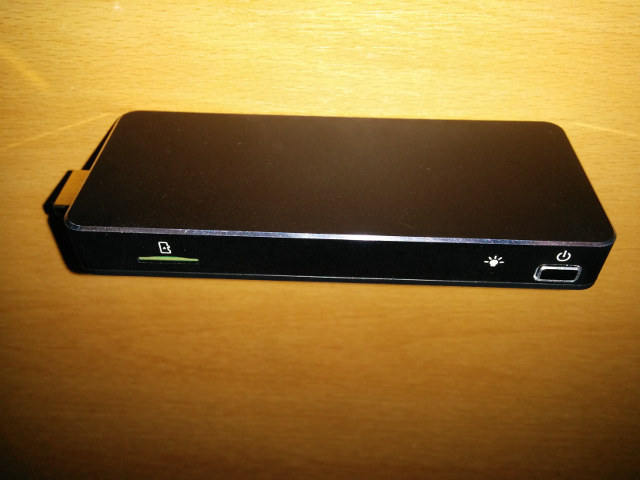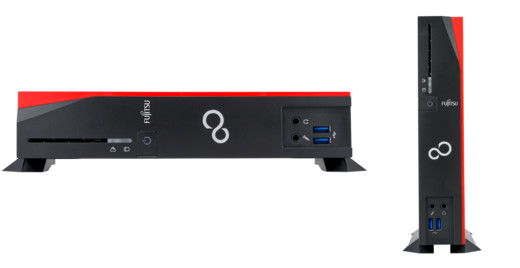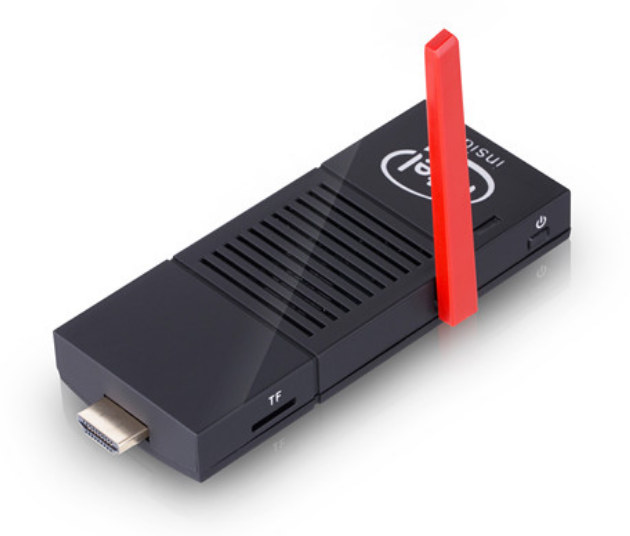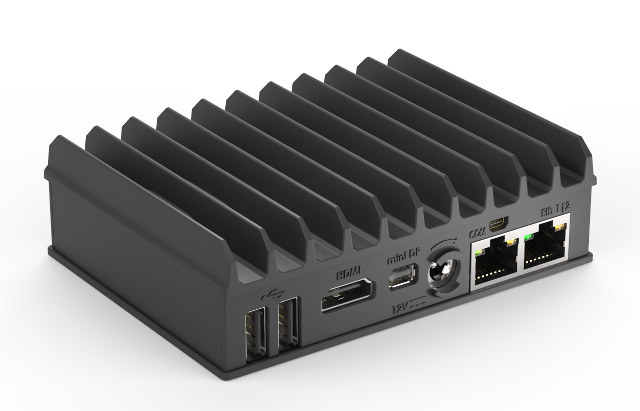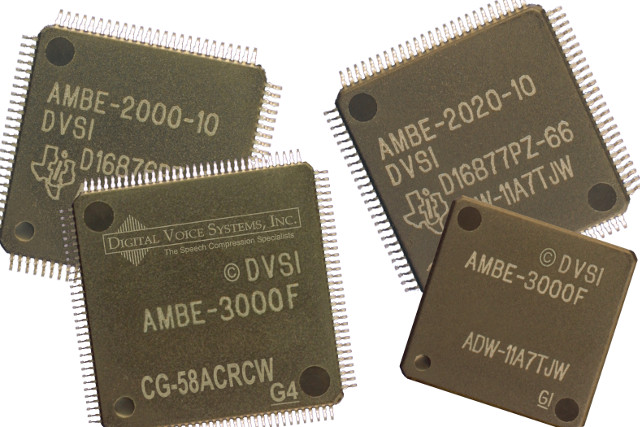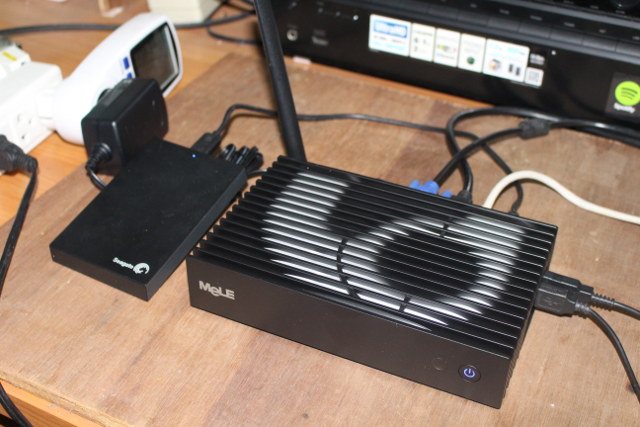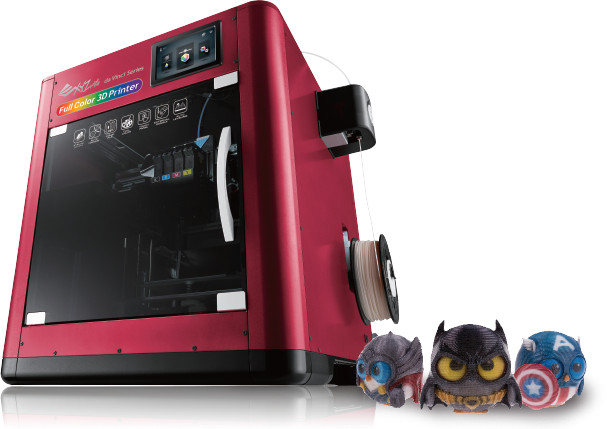The BBEN MN10 is the second Apollo Lake device to be released in the stick form-factor and on paper looks to have a lot to offer: It features an Apollo Lake N3350 SoC, an unusual 3GB of RAM, 64GB of storage and is cooled by a ‘mute’ fan. The devices comes in a plain box with a power adapter, and a leaflet style manual. It also included a three-pin UK power adapter, as this was advertised as the ‘BBen MN10 Mini PC – UK PLUG BLACK’. Looking at the detail specifications: We can immediately see discrepancies as the device does not have a ‘RJ45 Port Speed: 1000M LAN’ port, and was not supplied with ‘1 x HDMI Cable’ nor ‘1 x Remote Control’. Powering on the device and the ‘mute’ fan is also a miss-representation as it starts immediately and is noticeably noisy. It also runs at full speed regardless […]
FUJITSU FUTRO S540, S740, and S940 Thin Clients are Powered by Intel Gemini Lake Processors
Intel Gemini Lake processors should be officially launched in a few weeks with Pentium & Celeron SKUs. We already have a good idea about the new processors’ features, but AFAIK so far there’s been no official announcement of products based on the new processor family, since companies must still be under embargo. FanlessTech noticed three new FUJITSI FUTRO thin clients (S540, S740, and S940), and upon further research found they were based on mini-ITX and mini-STX motherboards equipped with Intel Celeron J4005/J4105 or Pentium J5005 Gemini Lake SoC. Let’s have a look at one of the models’ specifications (FUTRO S940): Mainboard – D3543-A mini-ITX board SoC – Intel Pentium Silver J5005 quad core processor @ up to 2.8 GHz with Intel Gen9 HD Graphics supporting DirectX 12, OpenGL 4.4, Open CL 1.2, OpenGL ES 3.1, Vulkan; 10W TDP System Memory – 2 GB – 16 GB via SO-DIMM slot (DDR4, 2400 […]
$100 CA98 TV Stick is Powered by Intel Celeron N3350 Processor
We’ve already seen Apollo Lake TV sticks such as MeegoPad T11, ECDREAM A9, or BBen MN10. Linuxium reviewed ECDREAM A9 model on this blog, and found out that Windows 10 (pre-installed), and Ubuntu 17.04 operating systems ran reasonably well with two main downsides: the relatively slow eMMC flash, and the noisy fan. Another issue is the size, as with 58mm width, it looks more an hybrid between a mini PC and a TV stick, than an actual TV stick. Another Apollo Lake TV/PC stick is now available with CA98 (aka CSA98) found on Aliexpress for $100, as well as on Shenzhen Indo Technology’s Alibaba page. CA98 specifications: SoC – Intel Celeron N3350 dual core processor @ 1.1 GHz / 2.4 GHz, 12 EU Intel HD graphics 500 @ 200 MHz / 650 MHz; 6W TDP System Memory – 2GB LPDDR3 Storage – 32GB eMMC flash (optional 16, 64 or 128GB) […]
Compulab Fitlet2 Fanless Apollo Lake Mini PC is Designed for Industrial IoT Gateways
Compulab Fitlet mini PCs were introduced in January 2015 with AMD Mullins processors, namely AMD A4 Micro-6400T or E1 Micro-6200T both of which including Radeon graphics, and supporting up to 8GB RAM, mSATA, up to two HDMI port, up to four Gigabit Ethernet ports. The company has now launched Fitlet2 mini PCs, replacing AMD processors by Intel Apollo Lake SoCs, supporting up to 16 GB RAM, and designed for “demanding IoT applications” with support for wide temperature range, and long term support and warranty. Fitlet2 specifications: SoC (from a choice among three) Intel Atom x7-E3950 quad core processor @ 1.6 / 2.0 GHz with 18 EU HD graphics; 12W TDP Intel Atom x5-E3930 dual core processor @ 1.3 / 1.8 GHz with 12 EU HD graphics; 6.5W TDP Intel Celeron J3455 quad core processor @ 1.5 / 2.2 GHz with 12 EU HD graphics; 10W TDP System Memory – 1x […]
AMBE+2 Vocoder Promises High Voice Quality at Low (2.0 to 9.6 Kbps) Data Rates
Opus 1.2 open source audio codec was release a few months ago with the ability to deliver low power low high-quality audio bitrate for speech with bitrates as low as 12 Kbps. Digital Voice Systems (DVSI) claims to have gone even lower thanks to their AMBE+2 vocoder (Advanced MultiBand Excitation) providing high-quality speech at data rates from 2.0 to 9.6 kilobytes per second. AMBE+2 vocoder is said to outperform the company’s previous generation AMBE+ Vocoder as well as the G.729 and G.726 vocoders, while operating at only 4.0 Kbps. The vocoder is suitable for mobile radio, secure voice, satellite communication, computer telephony, digital voice and storage applications The solution can be integrated into product either using software licensing, or through Vocoder chips, and the company lists the following key benefits: Maintains speech intelligibility and speaker recognition at rates as low as 2.0 kbps Resistant to background noise and channel bit errors […]
MeLE PCG35 Apo Mini PC Review – Part 2: Windows 10 Home
Laptops and mini PCs powered by the new generation of Intel Gemini Lake processors are coming soon, but companies are still launching Apollo Lake based products with various features. MeLE PCG35 Apo mini PC is one of them, and what makes it interesting compared to most of the competition is support for 80mm M.2 SSDs and 2.5″ SATA drives, on top of featuring a Celeron J3455 processor, one of the most powerful of the family. I took photos of the mini PC, accessories, and internal design in the first part of the review, so I’ll report about my experience with Windows 10 Home, explain how to manage the different drives, and test stability under load. MeLE PCG35 Apo Setup, Drives Configuration, Display Settings Last time, I’ve showed how to install an M.2 SSD and 2.5″ SATA hard drive inside MeLE PCG35 Apo, so I just have to connect a few […]
CHUWI LapBook 14.1 Laptop Manufacturing Changes – Hardware at Launch vs Several Months Later
Products may evolve over time due to parts becoming phased out (EOL), so company often issues PCN (product change notices) to the company for example to replace eMMC flash that’s not manufactured anymore by a new one. They won’t change any advertised features, so the product specifications should remain the same. Reviewers normally get product from one of the first batch of production, and if you purchase the product a few months later, after carefully reading reviews, you may end up with a device slightly different. But in some cases, the company makes major changes, while still delivering the same advertised hardware specifications. That’s apparently the case for CHUWI LapBook 14.1 laptop. The photo below shows how it looked internally for the sample I reviewed. If you zoom on the photo, you’ll find an M.2 slot on the bottom of the right PCB, potentially allowing you to add an SSD […]
XYZPrinting da Vinci Color Low Cost Full Color 3D Printer Combines Filament with Inkjet Technology
3D printing has become even more affordable this year. If you are on a budget, Anet A8 3D printer going for under $150 is often recommended on the web, but if you have a bigger budget, you’d get printer with a metal extrusion frame, larger build volume, and overall better quality, and Creality CR-10 3D printer is often recommended by reviewers for people with a $300-$400 budget. All those printers print with a single color, which depends on the color of the filament used. The cheapest way to get a colored sample is to paint it yourself after printing. There are printers with dual extruder allowing to use two filament rolls with different colors, but when Karl reviewed Tevo Tarantula 3D printer with dual extruder, he found it was hard to print, was unconvinced with the results, and found it to be an unnecessary upgrade, preferring painting instead. At the […]


